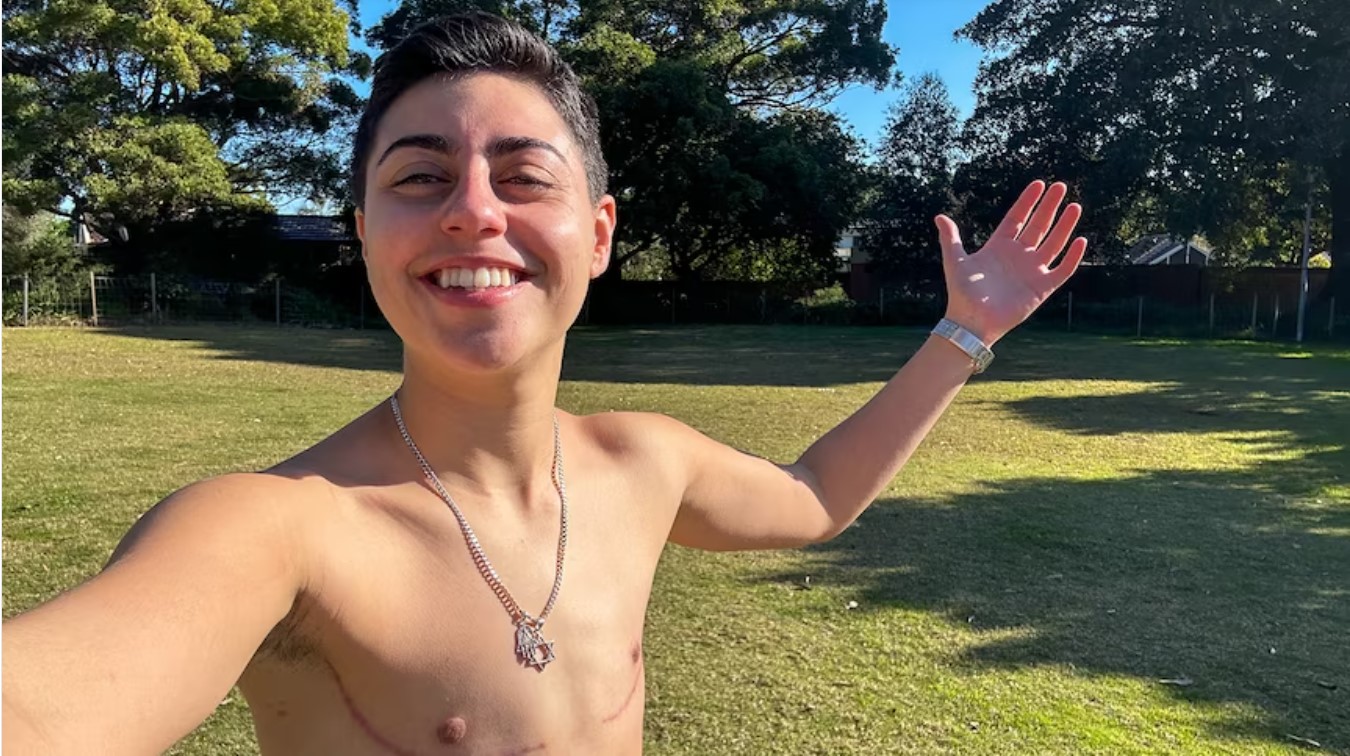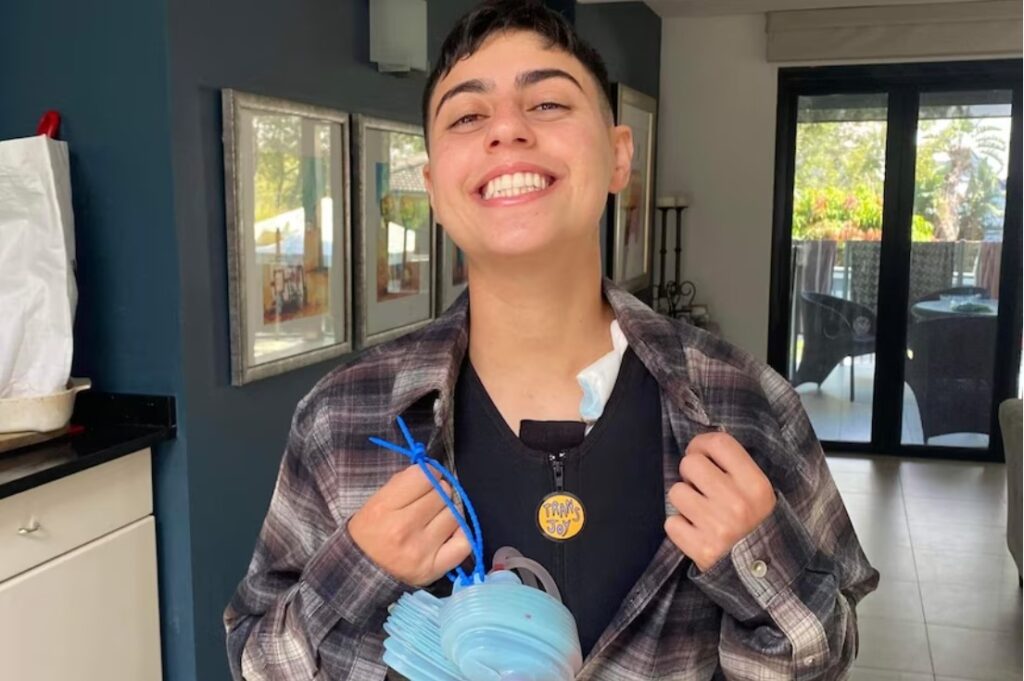Transcending Barriers: The Unforgettable Story of Gender-Affirming Surgery and Embracing a New Chapter of Identity

It has been a transformative three months since undergoing gender-affirming surgery, and the impact it has had on my life is beyond words. The decision to embark on this deeply personal and liberating journey has proven to be one of the best choices I have ever made.
My desire to align my physical appearance with my true self was the driving force behind seeking this life-changing procedure. I yearned to experience the simple joys of going to the beach, removing my shirt without hesitation, and immersing myself in the sheer bliss of swimming. Now, I can revel in these moments without any reservation.
Finally, I see my reflection mirroring the person I have always felt inside. Each morning, I have the freedom to select any shirt that resonates with my identity. The worries of hunching to conceal my chest or relying on layers to mask my true self have become relics of the past.
However, navigating this path to self-discovery has been anything but easy. In my younger years, I lacked the vocabulary to articulate my journey. The terms “non-binary” or “transmasculine” were unfamiliar to me, but deep down, I knew I didn’t identify as a girl. I simply felt like “Speedy.”
The past five years, from the ages of 20 to 25, have been marked by an intense and profound grappling with my identity. Fear and uncertainty loomed over me, particularly considering the fact that everyone in my life had known me in a specific way, especially within the Jewish community. Yet, I firmly believed that my gender identity and my faith community should not be at odds. Inclusion and tradition can coexist harmoniously within the fabric of community.
Navigating the intricate system of gender-affirming surgery presented its own set of challenges. It began with researching information on TransHub, seeking guidance from my general practitioner, and joining social media groups where I could engage in discussions with individuals sharing similar experiences. Eventually, I underwent an initial consultation with a surgery clinic, and once I felt prepared, I secured a date for my top surgery.
However, there was an unexpected hurdle that no one warned me about: the requirement of a surgical readiness letter. I had a mere two weeks to obtain this letter, failing which I would forfeit my deposit and be compelled to postpone the surgery. Admittedly, this was something I should have known, but when you lack adequate support and knowledge in the field, navigating such a complex system becomes an arduous task.
This quest for the letter turned out to be quite humiliating. I found myself pouring out my innermost struggles to professionals who, more often than not, were not even part of the transgender community. It was disheartening to go through the process with one psychologist, only to discover they were a trainee, rendering their evaluation invalid. The questions they posed about my sexuality seemed misplaced, as it had no bearing on my gender identity.
The subsequent search for clinical psychologists who could assist me proved to be immensely stressful. Many expressed that while they worked with LGBTQIA+ clients, they did not possess the qualifications to conduct the necessary assessments. Nonetheless, I persevered, learning how to advocate for myself in the face of these challenges, and ultimately obtaining the letter within the designated timeframe.
Undoubtedly, embarking on this transformative journey incurs financial costs. Typically, three sessions with a psychologist are required, in addition to the consultation fee at the clinic and the surgical procedure itself. Expenses can range from $10,000 to $20,000. I consider myself fortunate to have had access to health insurance, with a portion of the expenses covered by Medicare, bringing my total costs to around $10,000.
Regarding the surgery itself, I had opted for double incision with graft nipples, a process that involved resizing my original nipples. The procedure lasted approximately three hours, and when I regained consciousness, a wave of positivity washed over me. I spent one night at the hospital and was discharged the following day, where I formed a connection with the compassionate nurses who became my friends during this transformative period.
As with any surgical procedure, pain management was crucial. For the initial two weeks, I was prescribed painkillers stronger than Panadol. Subsequently, I experienced some discomfort around the nerves, but over time, it gradually eased. In the first week, the mobility of my arms was limited, leaving me reminiscent of a tiny T-rex. For about a month, I refrained from raising my arms above my shoulders, avoiding activities such as driving or lifting heavy objects.
During my recovery, my partner played an instrumental role in providing unwavering support. She took leave from work, assuming the role of my caretaker, tending to my medication, cooking, and assisting with daily tasks. Having someone by your side to offer support during the recovery process is immensely helpful and reassuring.

After two weeks, I resumed my work routine, although in retrospect, I would recommend taking three weeks off if circumstances allow. Regrettably, most organizations do not offer gender-affirming leave, requiring individuals to exhaust their sick leave and annual leave for this purpose. Nevertheless, I viewed this surgery as a gift to myself, an investment in my well-being and personal growth.
A moment of profound liberation arrived when I had the courage to remove my shirt in public for the first time. It occurred during a trans rights rally, three weeks after my surgery, amidst a torrential downpour. The sight of a massive trans flag unfurled before us, surrounded by a supportive crowd of gender-diverse individuals and allies, created an environment of peace and empowerment. Though I still had remnants of tape on my chest, protecting the scars from sunlight exposure for the next six months, I decided to seize the moment.
Braving the frigid temperatures, I unbuttoned my shirt, and in that instance, I felt an overwhelming sense of freedom reminiscent of carefree childhood days spent playing in the rain. I had shed the weight of societal expectations and embraced my true self, liberated and unburdened.
Scars hold different meanings for everyone who has embarked on this transformative journey. For many individuals who have undergone top surgery, scars become symbols of pride. Some individuals prefer that their scars remain visible, as they serve as a testament to their journey and personal growth. Of course, there is an underlying fear, especially in light of the recent surge in transphobia, regarding potential harm or discrimination when exposing these scars to the world. I have encountered some backlash on social media while sharing my experience and story, but I refuse to allow it to dampen my spirits. I speak out with the intention of sparing others from experiencing the shame and fear that often accompanies being gender-diverse. My hope is that my voice will inspire others to realize that this journey does not need to be stigmatized or sensationalized.
As I move forward, I eagerly await the gradual fading of my scars while remaining proud of the journey they represent. It is my way of asserting my identity, embracing the resilience and strength that have propelled me through this transformative experience.


